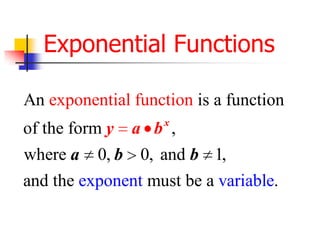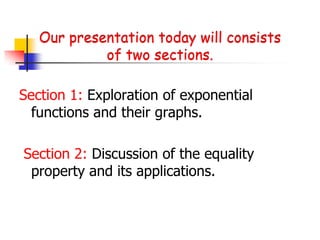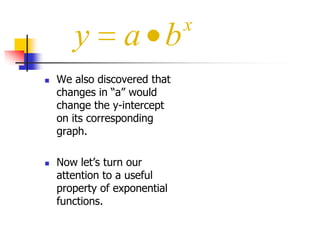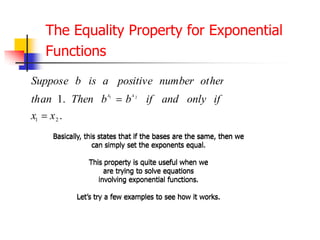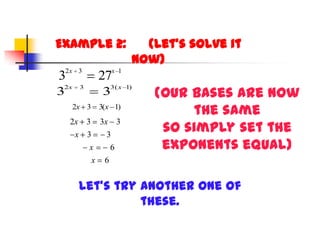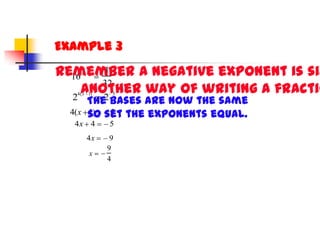1. Our general exponential form is y = a*b^x, where changes to the base "b" result in either a steep increase or decrease in "y" as "x" increases depending on if b>1 or 0<b<1. Changes to "a" affect the y-intercept.
2. We discovered the equality property for exponential functions: if bases are the same, we can set the exponents equal to solve equations. If bases differ, we rewrite so they are the same before setting exponents equal.
3. We worked through several examples applying the equality property to solve exponential equations by setting exponents equal once bases were the same.
